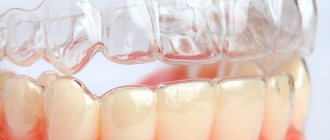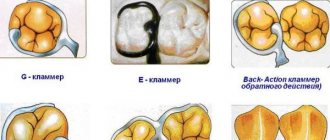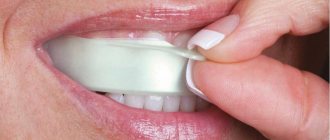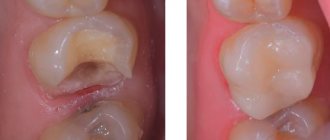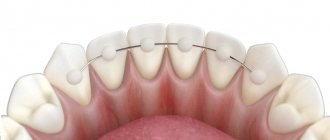There are a number of countries whose health services really pay a lot of attention to caring for the dental health of the population and offer dentists the best working conditions. These countries are ready to pay specialists more, therefore, many young (and not only) dentists are thinking about moving.
So if you are a dentist who wants to change environment/country/citizenship, move to a metropolis, rural area or, for example, closer to the beach, you should study this list.
The results below are based on the average annual salary for a dentist in a given country. Let's start with an honorable tenth place.
Australia
The average annual salary for a dentist is $73,600. In Australia, dentistry is one of the best sources of income in medicine. The Dental Council of Australia oversees dentistry in the country. To practice there, you must obtain a license and registration from this board. However, they will not grant registration to an international graduate until he or she has passed the ADC exams or completed two years of training and education at a local accredited dental school.
How treatment is carried out abroad: patient perceptions
Many people believe that it is better to undergo dental treatment abroad. Allegedly, more professional doctors work there, the most modern equipment is installed, and the highest quality and most durable materials are used. Plus, the most complex clinical cases are solved.
Most often they travel abroad for the purpose of dental implantation. Many patients believe that there they will receive original models of artificial roots from the best manufacturers in the world, for example, Nobel Biocare or Straumann. Plus, implantation procedures have been practiced abroad for a longer time than in Russia. All this together, according to patients and advertisers, guarantees long-lasting results and protects against errors and complications.
Expert opinion
Nikolay Vladimirovich Namdakov
Specializations: Oral and maxillofacial surgeon, implantologist, orthopedist
Experience: 18+
“20 years ago, the quality of paid dental care in Russia was really low. However, today the situation is radically different. Thus, in large cities (and especially in the capital) some of the best specialists in the world work, who constantly improve their skills, including abroad. A variety of treatment methods are practiced in our country, and the most complex clinical cases are solved. Here you can just as easily install original Nobel Biocare or Straumann implants, Hollywood Lumineers, prostheses made from the most modern materials, and also quickly find all the necessary components.”
Spain
The average annual salary for a dentist is as much as $176,000. This is a significant difference compared to other countries. It's no surprise that more and more dentists are moving to Spain. Not only are salaries almost double those of Switzerland, but the country has relatively low taxes and a lower cost of living. When it comes to money alone, Spain is obviously the best country to practice dentistry.
Of course, you should remember that average annual salary should not be the only factor in your decision to move. One must also take into account the cost of living, local culture and characteristics of potential patients, as well as the number of dentists per square kilometer in a particular region of the country.
Advantages and disadvantages
No matter how rosyly all the delights of implantation abroad are painted, there are still “pitfalls” that our compatriots definitely need to know about.
Foreign dental centers have both positive and negative qualities. The advantages include:
- Equipment. Using only patented and high-tech equipment that meets quality and safety standards;
- Staff . Qualified and trained personnel;
- Implantation systems . Application of modern systems and methods of dental treatment, high-quality and proven material;
- Increased attention. Sensitive and caring attitude towards the client, free consultations on the services provided, comfortable and convenient interior, calm atmosphere;
- Obligations. The warranty period for implants is from 10 to 20 years;
- Advanced pharmacology. The use of unique drugs of natural origin, sold exclusively in one country;
- Ideal conditions. Dentists have their own laboratory.
The disadvantages include the following:
- Language barrier. Availability of staff who speak exclusively their native language;
- Price policy. Prices for some services are quite high (you should also take into account the cost of travel, accommodation and food during treatment);
- Climatic conditions. In the country where the dental clinic is located, there may be an unfavorable climate or sanitary situation (travel requires vaccinations, consultation with a doctor);
- Nuances of the treatment period. Some diseases require long-term treatment (more than 1 visit); dental implantation requires several visits to the dentist and further checking by a doctor of the healing process (you need to calculate your income and expenses);
- The work of intermediaries. Expensive cost of flight, translation and accompanying person services.
What problems does anti-age dentistry solve?
Bite correction
With age, the height of the bite decreases and the tone of the muscles of the face and neck changes. Because of this, the oval of the face “sinks” and the number of wrinkles increases. They can be smoothed out using cosmetic procedures, but the effect will be temporary. It is much better to deal with the root cause - an uneven bite, advises dentist Kushch.
“The height of the bite and the lower part of the face is increased with veneers, crowns or by restoring missing teeth. For the latter, implants or fixed prostheses are most often used. In addition, veneers and crowns restore the anatomically correct height, width and shape of teeth. If you reduce the tissue of the upper jaw, the upper lip will also drop, and the teeth at the top will become almost invisible. The correct bite will be reflected in the oval of the face: it will become clearer,” says the specialist.
Enamel treatment
The dental hygienist corrects the shade of the enamel, removes darkening, and remineralizes the teeth, the expert says. Teeth become healthy: cracks, chips and abrasions disappear. Thanks to these procedures, your smile is healthy and bright, just like in your youth.
Relaxation of the masticatory muscles
Two methods are used for this: TENS therapy and Botox. The first is electrical neurostimulation through the skin, says Oleg Kushch. With the help of electrical impulses coming from electrodes, painful and tense muscles are affected. The impulses influence the production of endorphins, chemicals that block pain.
“Botox also reduces tension in the facial muscles. Botulinum toxin blocks impulses sent from the nerve to the muscle. As a result, she becomes less active. The face returns to its usual oval,” explains the dentist.
It was inherited. What dental abnormalities can a person be born with? More details
Popular countries
Korea, Germany, China, Israel, Canada - this is a list of countries that offer high-quality and safe dental services.
The latest technologies, high professionalism of doctors, robotic equipment are the hallmark of clinics in these countries of the world.
Compared to Russian dental clinics, they are strong competitors, capable of offering competitive prices for the services provided, as well as a decent level of service.
Experience and professionalism are the qualities that put such clinics in first place. The staff has a number of incentives to provide clients with more attentive, caring service:
- permanent internships;
- free training and advanced training;
- decent salary.
Foreign specialists can offer a wide range of services to clients who turn to them for help:
- installation of dentures and crowns;
- carrying out operations requiring surgical intervention;
- safe and painless tooth extraction mechanically or using a laser.
These are countries especially visited by tourists for medical examinations. They have rightfully earned positive customer reviews, recommendations and praise.
For example, Canada is one of the top three countries in terms of the quality of medical services. The provision of dental services here is carried out at the highest level.
Germany is also famous for dental clinics with affordable prices compared to the Russian Federation.
Innovative equipment, honesty and integrity, long-term guarantee are offered in Toronto, Vancouver, Ottawa, Montreal.
In Germany, decent service can be offered in the following cities:
- Munich;
- Hamburg;
- Stuttgart;
- Dusseldorf.
The most popular multidisciplinary dentists are concentrated in these cities, offering a whole range of services.
In China
China is a very developed country with high technology. People go to Chinese cities not only for tourism purposes, but also for quality medical care. Large dentists are located in Shanghai, Beijing, Wuhan.
The advantages of visiting clinics in this country:
- Korean, Japanese and German prosthetic systems;
- very low prices compared to Russian clinics;
- long-term warranty on materials;
The disadvantages include the following:
- high cost of tickets to China;
- The national language is one of the most difficult in the world.
Implantation in Chinese clinics is comfortable and fast. Usually within 1 day, regardless of the number of implants. Also, Russian dentistry will not be able to boast such low prices for the services provided.
Similar procedures in China will cost 50%-65% less. Many tourists claim that the cost of the trip to the clinic is offset by reasonable prices for treatment.
The secret of the popularity of Zimmer implants and the protocol for their installation. In this publication, we will find out together whether the price of Semados implants corresponds to their quality.
Here https://dentist-pro.ru/implantaciya/proizvoditeli/konmet/v-chem-unikalnost.html we will tell you how to install Konmet implants.
In Korea
Korea is a favorite destination for medical tourism. For vacationers here:
- advanced technologies that are not available in European countries;
- highly qualified personnel;
- unique methods for dental implantation;
- acceptable prices.
Clinics are located in Busan, Ulsan, Seoul.
Nanotechnology and the latest prosthetic systems are used here. The cost varies from 300 US dollars to 5000 depending on the complexity of the work and the name of the material.
The climate in Korea is favorable for visiting local dentists. Their advantages are as follows:
- unique preparations for wound healing (on a natural basis);
- a huge number of positive reviews from satisfied customers;
- express system for dental treatment, implantation;
- the use of combined techniques in dentistry, which allows us to treat both adults and children;
- the presence of clinics with a special center for Russian-speaking citizens.
In Israel
Israel is not only a favorite country for pilgrims and tourists, but also a high-tech and developed state.
The country is known for its robotic implantation units, advanced and environmentally friendly materials. Clinics offer high-quality diagnostics of teeth and oral cavity.
The most popular dental centers are located in the cities of Tel Aviv, Haifa, and Jerusalem.
Here a foreign citizen can not only relax, but also spend time profitably and take care of his health. Clinics are accepted by appointment and on a first-come, first-served basis.
Among the main prides of Israeli clinics are the following:
- the presence of unique equipment that has no analogues in other countries of the world;
- the cost of services is not inflated, despite the quality and expensive materials;
- implantation takes place in 1 day (despite the number of implants), when other dental clinics perform the same amount of work within 10 or 15 sessions;
- medical personnel are employees who have undergone internships abroad or at home and have received certificates of suitability for the position being filled;
- Israeli clinics value their reputation.
Israeli dental centers offer one-stage implantation. The price for one implant is from 850 euros to 1300 euros, crowns for an implant are wholesale 750 euros. The final cost can be found out in the selected Israeli clinic after examination and consultation with a doctor.
The video provides additional information about dental implantation in Israel.
Who can benefit from anti-age dentistry?
Many of these procedures are performed on patients of different ages. But people over 40 most often care about beauty and health. It is important to understand that this is a whole complex of techniques. Doctors recommend not only installing crowns, but also treating gums. Only through the joint efforts of several specialists can results be achieved.
Modern dental capabilities will make you look younger by five to seven years, says the specialist. But this does not mean that you should forget about self-care. To maintain a beautiful and healthy smile, you need to follow several rules:
- Brush your teeth twice a day with toothpaste, floss (dental floss) and rinses.
- Visit the dentist for an examination (once every six months to a year).
- Eat a balanced diet, consuming healthy foods and vitamin complexes.
- Get rid of bad habits.
Then dentistry will replace cosmetic procedures for you: lifting, plastic surgery and fillers. In addition, she will give a beautiful smile, sums up Oleg Kushch.
Self-medication is unacceptable. There are contraindications, you must consult a specialist
Braces: is it ever too late?
Today, braces at 30, 40 and 50 years old are not only not shameful, but in some sense prestigious. “For me, a person with braces after 30–40 years of age is a certain status: this means that a person can afford such expensive treatment. After all, orthodontics (correction of bite) is not a procedure for a week, it is a large and lengthy work of several specialists, which allows you to achieve a long-term and high-quality result,” says Alexandra Ledeneva, a dentist at the Bernatsky Clinic. She says that most often patients come in with severe changes in the temporomandibular joint, which prevent them from opening their mouth normally, chewing, and so on. To avoid this, dentists advise contacting an orthodontist earlier, at the first symptoms of upcoming problems. These, according to Irina Erilina, include frequent headaches, muscle tension in the jaw area, pain when eating and opening the mouth, noises in the temporomandibular joint, bruxism - paroxysmal contractions of the masticatory muscles that periodically occur during sleep, which are accompanied by clenching of the jaws and gnashing of teeth. “Age does not matter in orthodontic treatment. A patient can visit an orthodontist from the age of 3 to 65 years. What reasons can lead a patient to an orthodontist after 30 years of age? The most common, of course, is a beautiful, even position of the teeth, obtaining, so to speak, a “smile arch,” or exposure of the incisors, when the patient receives a wide, beautiful “Hollywood smile.” Patients turn to an orthodontist when teeth are lost and, as a result, deformations of the teeth and dentition occur and there is no room for implantation and prosthetics,” comments Erilina.
Today, the main way to correct an overbite is still braces. They come in the usual types - metal, as well as transparent and lingual (installed on the inner surface of the teeth). For those who do not at all accept the idea of installing wires on their teeth, there is another option - treating the bite with the help of transparent trays and aligners.
If you imagine that the oral cavity is a road, then the upper jaw can be compared to the rails for a tram
“We can use transparent orthodontics in cases where it is extremely important for the patient that his treatment proceeds as discreetly as possible. We can also offer treatment with mouth guards if you often travel on business and are unable to visit the orthodontist every month to monitor and activate the brace system. But for the success of such treatment, the patient’s responsibility is important: the mouthguards must be worn 22–23 hours a day, removing them only while eating,” explains Anastasia Markova.
Of course, treatment with braces or aligners is not a panacea. First, it hurts: almost everyone - at least 75-90% of patients - report that they experience pain when their teeth change their position. It can be so unbearable that between 8% and 30% of people stop treatment early. Therefore, it is worth assessing in advance how serious your problem is and whether it is worth such suffering. Perhaps, if we are talking only about aesthetics, we can get by with dental restoration or veneers. But if you, for example, experience regular headaches, the ends may justify the means.
Secondly, up to half of orthodontic patients experience enamel decalcification—the leaching of calcium salts from the surface of the teeth. It looks like white spots on the surface of the teeth. And the problem is not even the aesthetic effect: decalcification is the first step to the formation of caries. Sometimes after removing braces, remineralization occurs and the enamel is restored, sometimes this does not happen. Therefore, if you want to get braces without losing your dental health, be prepared to devote a lot of time to hygiene: brushing your teeth after every meal, additionally flossing them, and better yet, treating your oral cavity with an irrigator every day.
To avoid disappointment in difficult and expensive treatment with braces or aligners, it is worth preparing for lifelong maintenance therapy. After receiving the result, the orthodontist will offer you a retainer - a transparent mouth guard that you will need to wear to maintain the effect. For the first 6–12 months, you will need to do this all the time, removing the retainer only when eating, and then wearing a mouthguard at night. To ensure that the results do not disappear, you will have to wear a retainer for the rest of your life (or until you lose your own teeth).
It was the Swedes who gave the world the opportunity to replace removable dentures with fixed teeth on implants
In general, it is worth weighing the pros and cons before going to the orthodontist. But you need to keep in mind: if the malocclusion is not cured in time, you can get a huge number of unpleasant health consequences - from tooth decay to spinal curvature. “The upper jaw with teeth is a fixed bony structure connected to other bones of the skull. If we imagine that our oral cavity is a road, then the upper jaw can be compared to the rails for a tram. In this metaphor, the lower jaw is a tram: it moves all day long when we talk, chew, swallow, and at night it can also move if you “grind your teeth” in your sleep. And now imagine that incorrectly positioned teeth on the upper or lower jaw are either crooked rails or incorrect, inappropriate wheels. What will happen as a result of such discrepancies? Everything will break completely sooner or later.
The teeth will crack, wear away, plaque will get into microcracks - and caries will develop. The bone tissue that surrounds the teeth will also cease to withstand - and then the bone will begin to dissolve, the teeth will become mobile, and periodontal diseases may develop. Also, with an incorrect bite, the functioning of the joints responsible for the movements of the lower jaw - the right and left temporomandibular joints - can be disrupted. Because of this, problems arise both with the joint itself and with the muscles surrounding it. Also, the position of the lower jaw directly affects the position of the head and the relationship between the head and the cervical spine - and if these connections are disturbed, then the chain of violations can go along the entire spine,” explains Ph.D. dentist-orthodontist at the Clinic of Functional Dentistry of Dr. Kochkarov Tatyana Lenko.
Advertising on Forbes
The doctor says that treating patients who have already developed problems with the temporomandibular joints is a complex process; this is done by a special doctor who works with jaw problems, a gnathologist, in a team with dental doctors. Sometimes, in order to correct the damage caused by a malocclusion, it is necessary to involve specialists in other fields: a kinesiologist, osteopath, neurologist, endocrinologist, etc.
Treatment and gum surgery
Particular attention should be paid to the condition of the entire jaw, and not just the teeth. There are certain procedures that help change the visible edge of the gums and the position of the lips, warns Oleg Kushch. In addition, they relieve inflammation and bleeding. Gums are treated using laser surgery. In the process, missing parts of the gums are built up or growths are cut off.
“First, this procedure reduces the risk of gingivitis, a chronic inflammation of the gums. Secondly, it helps to achieve a symmetrical contour of the gums on identical teeth, which changes with age. This is how the smile becomes healthy and harmonious,” notes the doctor.
They overdid it with care. What good habits can spoil your teeth? More details
How effective and safe are the most popular “cosmetic” dental procedures?
Dental restoration is the most popular aesthetic dentistry service today, aimed at restoring the natural appearance of teeth. It allows you to eliminate chips, cracks and unevenness on the teeth, restore tooth enamel, hide interdental gaps without the need to wear braces, correct the shape of the tooth and even visually align it in the dentition. To achieve this effect, the doctor applies a special material to the surface of the tooth or teeth - a photopolymer, which “sticks” to the enamel under the influence of light.
Dental restoration with photopolymer materials is a fairly effective and safe way to make your smile more beautiful. Usually, the dentist does not need to file away a large amount of enamel (if any) to make a correction - this allows you to preserve the maximum surface of your own tooth. Restoring a smile in this way does not take much time; the doctor can do it in one appointment. But the method also has limitations: the material is not as durable as, for example, veneers and crowns, and may not withstand heavy loads. This photopolymer also tends to get dirty from food and drinks. So, if you decide to make a restoration, it is better to carry it out on teeth that are little involved in chewing - for example, on the incisors and canines: they are least exposed to stress, and besides, it is these teeth that form the appearance of the smile. Also, people who have undergone dental restoration are advised to be more careful about their hygiene, using floss and mouthwash in addition to regular brushing.
Veneers
is a more advanced way to restore a beautiful smile. When filling irregularities with photopolymer material does not cope with the task, the dentist can resort to installing special plates, veneers, on the surface of the teeth - they, as it were, create a new “facade”. Therefore, veneers are again installed mainly on the incisors and, possibly, on the fangs.
This procedure is more complicated than restoration: veneers are made individually from dental impressions, so it can take several weeks from your first visit to the dentist to your new smile. It is also, of course, more expensive than conventional restoration with photopolymers. And most importantly, it carries significant risks for dental health: the fact is that before installing veneers, part of the natural enamel is cut down - this is necessary in order to attach the plates to the teeth. This can make your teeth more sensitive to high and low temperatures, and if they develop tooth decay, they may need to be removed and replaced with crowns. Therefore, installation of veneers is not recommended for people with problem gums and teeth prone to caries. But despite the fact that after the first boom of veneers, doctors issued warnings about their danger to dental health, the popularity of veneers has not decreased. “I would say that interest in veneers has, on the contrary, increased in recent years: everything
they want a beautiful, wide, bright and snow-white smile - and, unfortunately, this cannot always be achieved with orthodontic treatment or whitening,” says Anastasia Markova, dentist at the Bernatsky Clinic (Queen Nella Clinic). The chief physician of the dental department of Meditsina JSC, Irina Erilina, adds that aesthetics is not the only reason to install veneers and, in addition to the risks, they can also bring benefits to dental health. “Increased fragility and wear of teeth is a good reason to protect them with a reliable ceramic veneer,” explains Erilina.
Whitening
is the most controversial tool in the arsenal of aesthetic dentists. Not enough is known about the effectiveness and safety of many whitening agents, primarily due to a lack of high-quality placebo-controlled studies. Those that are used in dentists' offices work by containing hydrogen peroxide, but they also have significant side effects: increased tooth sensitivity, destruction of enamel and even the bone part of the tooth, dentin. Scientists advise dentists to warn patients about the possible consequences before suggesting they whiten their teeth. Also, for people who want to make their smile snow-white, it makes sense to think about home remedies: many of them contain hydrogen peroxide, but in a lower concentration - 10% versus 35% in professional products. At the same time, according to experiments, the difference in the degree of whitening is small and is visible only in the first week, but home kits are much more gentle and less likely to lead to enamel destruction.
The tools of orthodontists stand apart from purely aesthetic methods in dentistry - these are precisely the doctors who install braces, aligners and use other methods of bite correction. These procedures solve both aesthetic issues and health problems - teeth and more. Those who are not helped by simpler “cosmetic” dentistry should turn to the services of an orthodontist.
